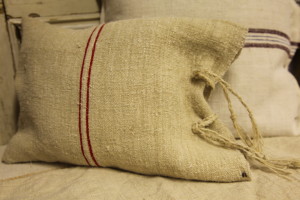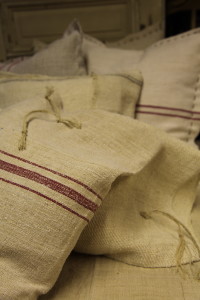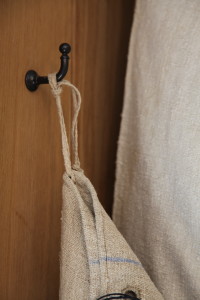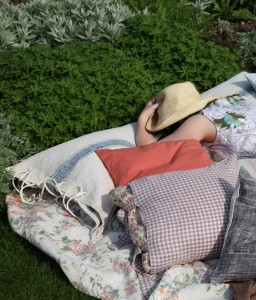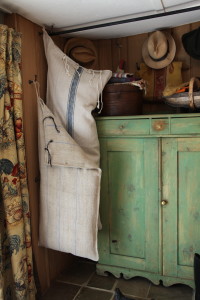In middle Europe, for generations and until fairly recently, fabric sacks were used to carry flour from the mill to the wholesaler or end user. Traditionally made from hemp, and occasionally linen, they are typically woven with one or more vertical stripes in tones of blue, red or sand, and occasionally black or green.
The ground yarns were more or less fine, or rustic… depending on the locality, the fibre, and the weaver. The main fibre remained in its’ natural colouring, so each sack would wash out to an off-white, even though it might have started out creamy-brownish.
Vegetable dyes were used for the stripes of blue (indigo), sand (turmeric or pomegrantie), or red (madder). Seams would be stitched with very small close stitches to prevent flour spillage, and the tops tied with plaited or twisted lengths made from spare yarn.
Hand stitched hems with tiny stitches, and plaited ties ….
We’ve used them for many rooms – opened up and joined for curtaining, bedheads and loose covers, cut down for cushions and bolsters.
And, of course, on sofas and beds and in the garden ….
A lazy summer afternoon
Flour sack pillows kept close to the garden door …..

